How to create a tunnel of pears in your garden
Few things are as beautiful and yet bear such fruit — literally — as a tunnel of fruit trees in your garden. The owners of Banks Fee share how they created their pear tunnel.

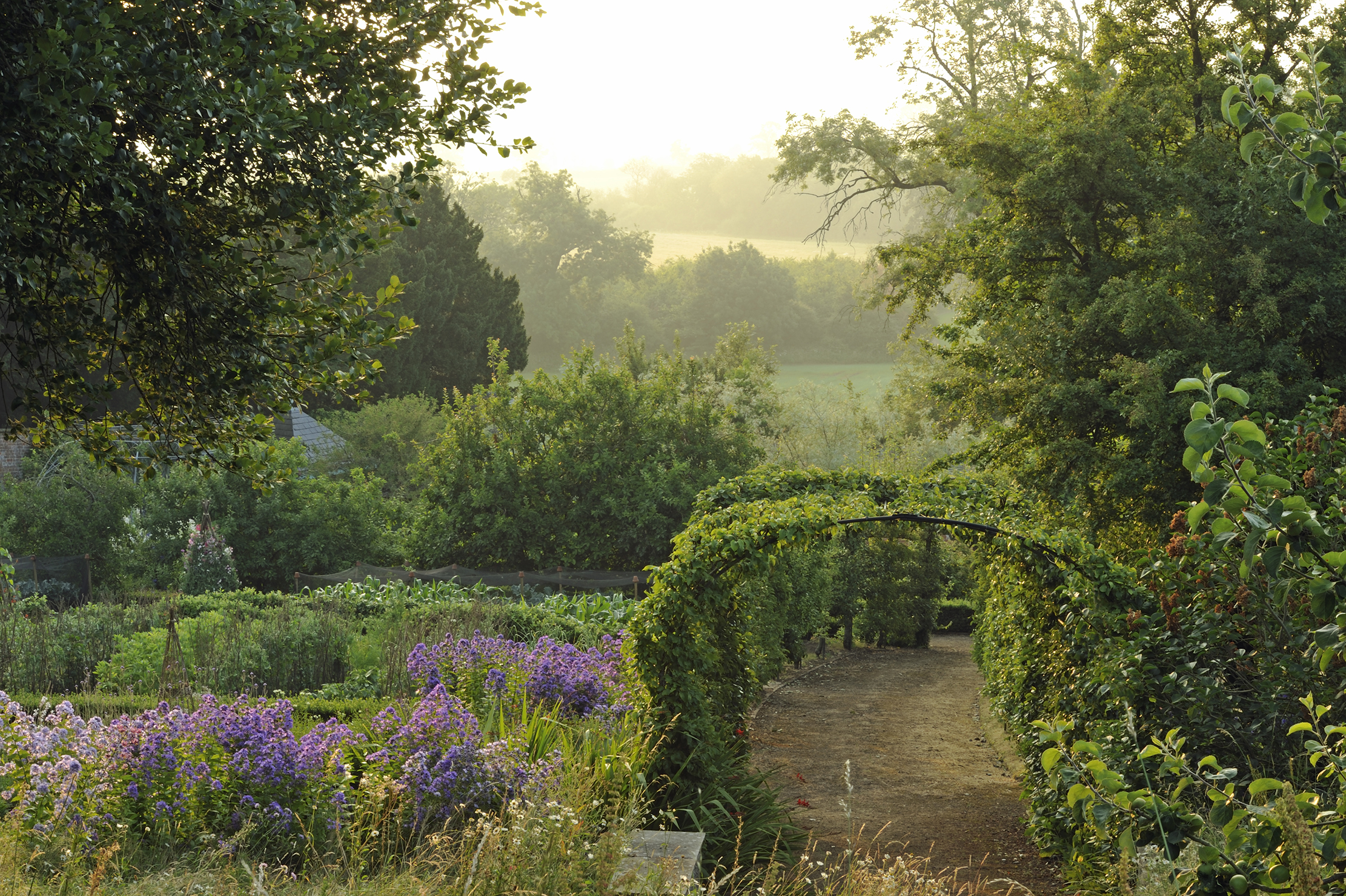
The kitchen garden at Banks Fee — which Non Morris wrote about a couple of weeks ago — is approached via the Plunging Path, a secret, shady tunnel filled in late winter with scents of sarcococca, daphne and witch hazel.
On the opposite side, running almost the full length of the kitchen garden, is an even greater treasure: a gently curving pear tunnel. This is spectacular in spring, when the 13 varieties of pear are in blossom, the crowning glory of a serene garden.
How are such things created? The owners shared their tips — here’s what they told us:
- You’ll to start with a frame. The iron frame at Banks Fee is 10ft wide and 10ft high, allowing room for two people to walk along it side by side. At every 12 inches, supports have been inserted (either iron bars or wires) for the arms of the trees.
- Bare-rooted maiden trees were planted 6ft 6in apart.
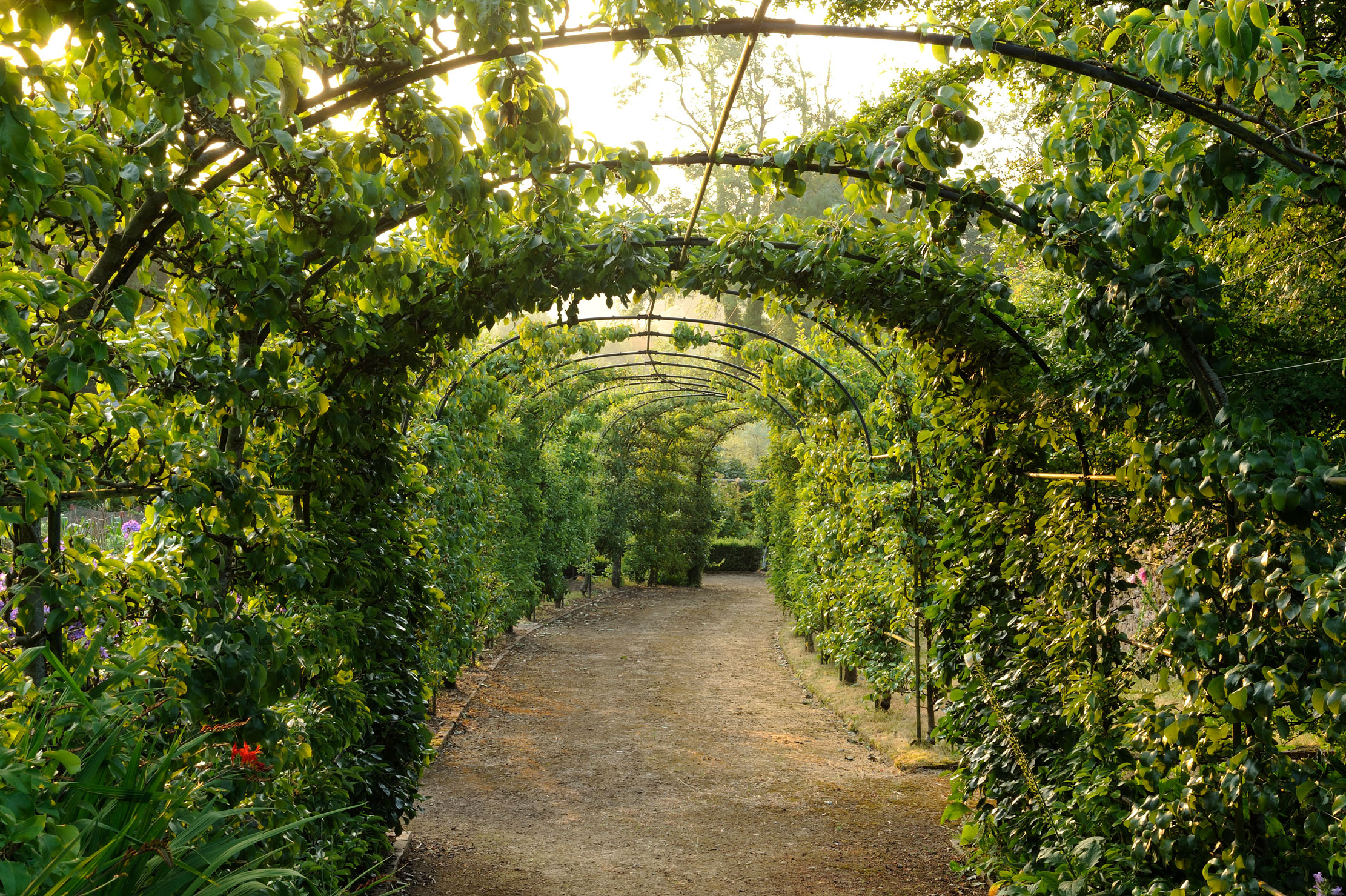
- The pears include Beurre Hardy, Beurre Superfin, Catillac, Conference, Doyenne du Comice, Emile D’Heyst, Moonglow, Onward, Packham’s Triumph, Pitmaston Duchess, Sensation, Verdi and Williams’ Bon Chrétien. There are larger numbers of Comice and Bon Chretien, but all have done well.
- Winter pruning is done to encourage new growth: the leader is cut back to buds where it is wanted. These new growths will eventually provide new arms and a new leader.
- Summer pruning is to restrict growth and to form fruiting spurs on the horizontal arms: surplus growth can be cut back to three leaves from the basal cluster.
- In the early stages, it’s useful to tie the new arms to canes angled at 45 degrees (rather than horizontally). This allows the new growths to extend in a normal way. They should then be tied horizontally at the end of the season.
- Don’t underestimate the importance of tying and re-tying the arms. They become very heavy with fruit at a time of year when winds can cause damage.
- Pears can be thirsty, so caution is needed if you’re planting very close to them as water resources may be strained.
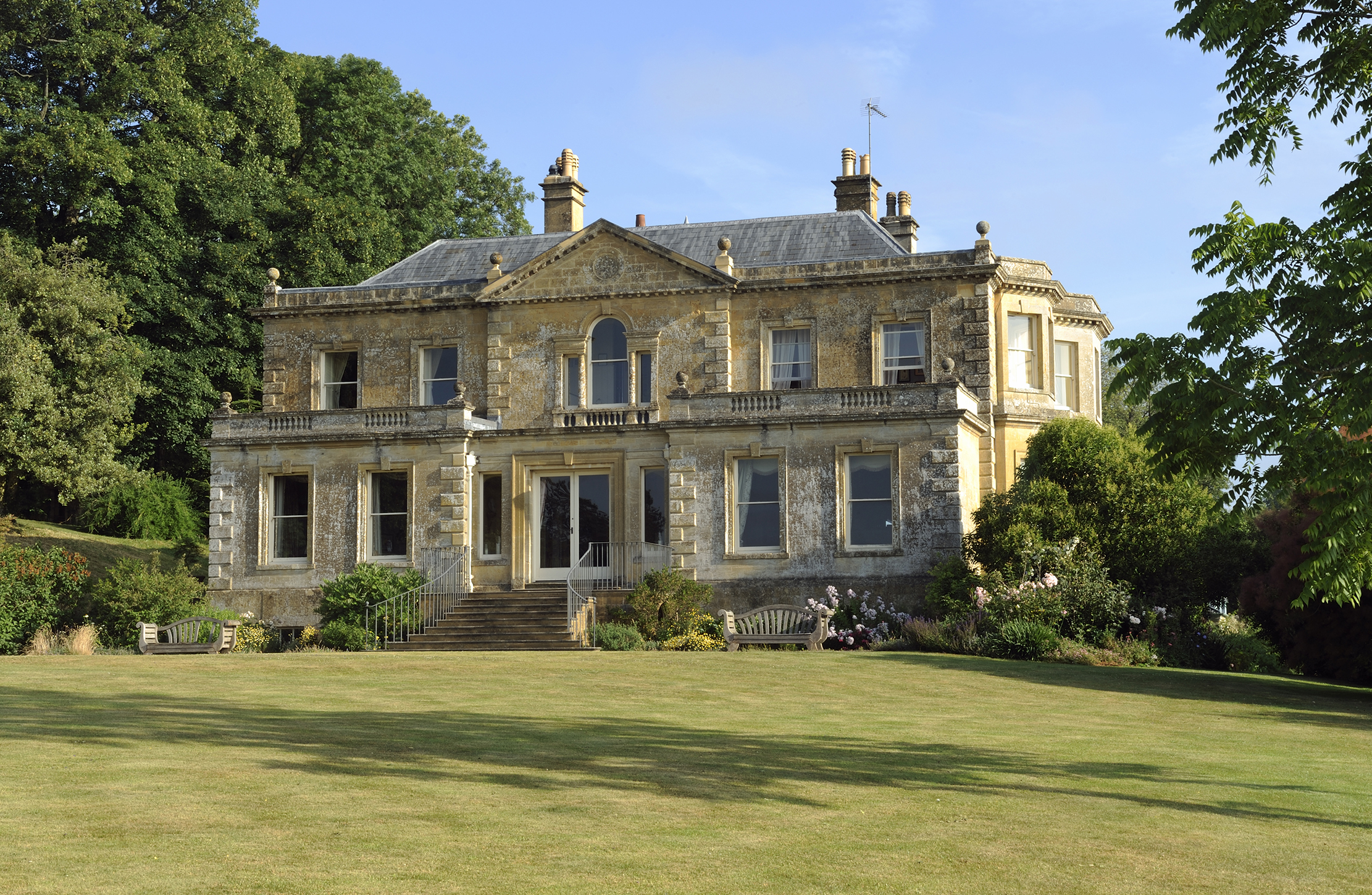
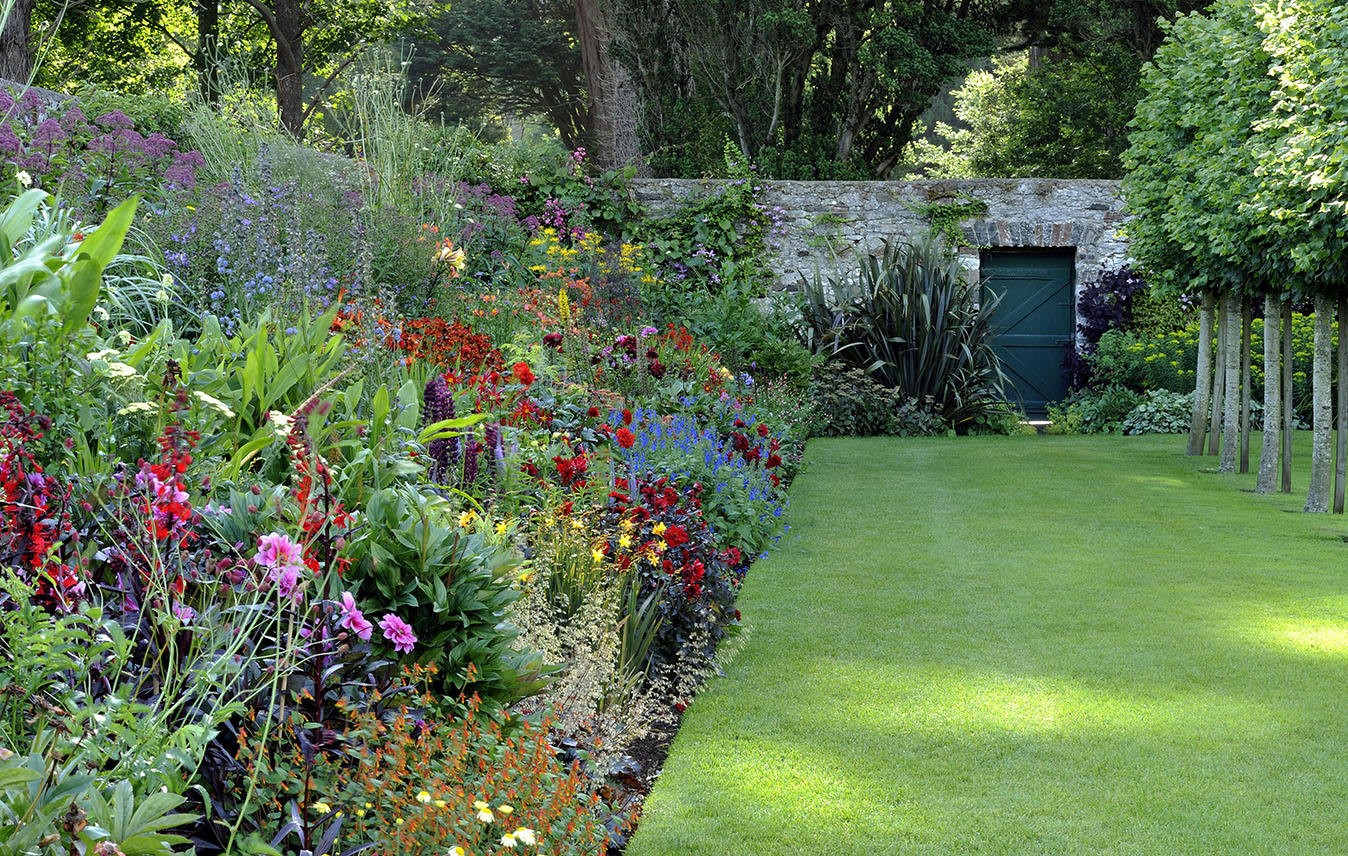
The walled garden at Glenarm Castle, full of surprising, exhilarating and fiery colours
Glenarm Castle's walled garden is a testament to the endless nurturing enthusiasm and creativity of those who care for it,
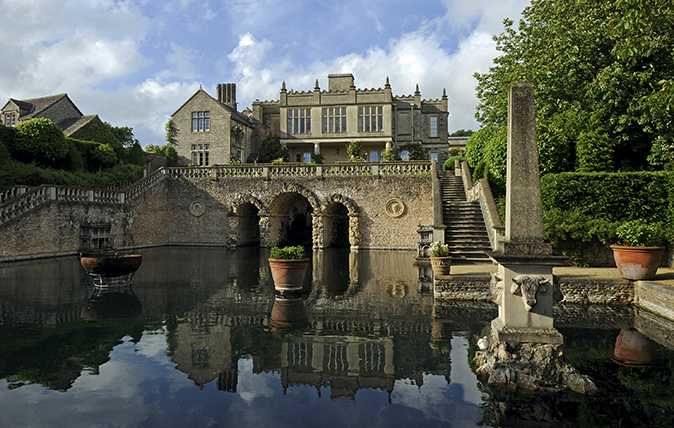
Credit: ©Val Corbett/Country Life Picture Library
Euridge Manor Farm, Wiltshire: A fairytale sense of fun, with a pool where rose petals gather
Non Morris is enchanted by the garden buildings, attention to detail and abundant planting in a recently made Wiltshire garden.
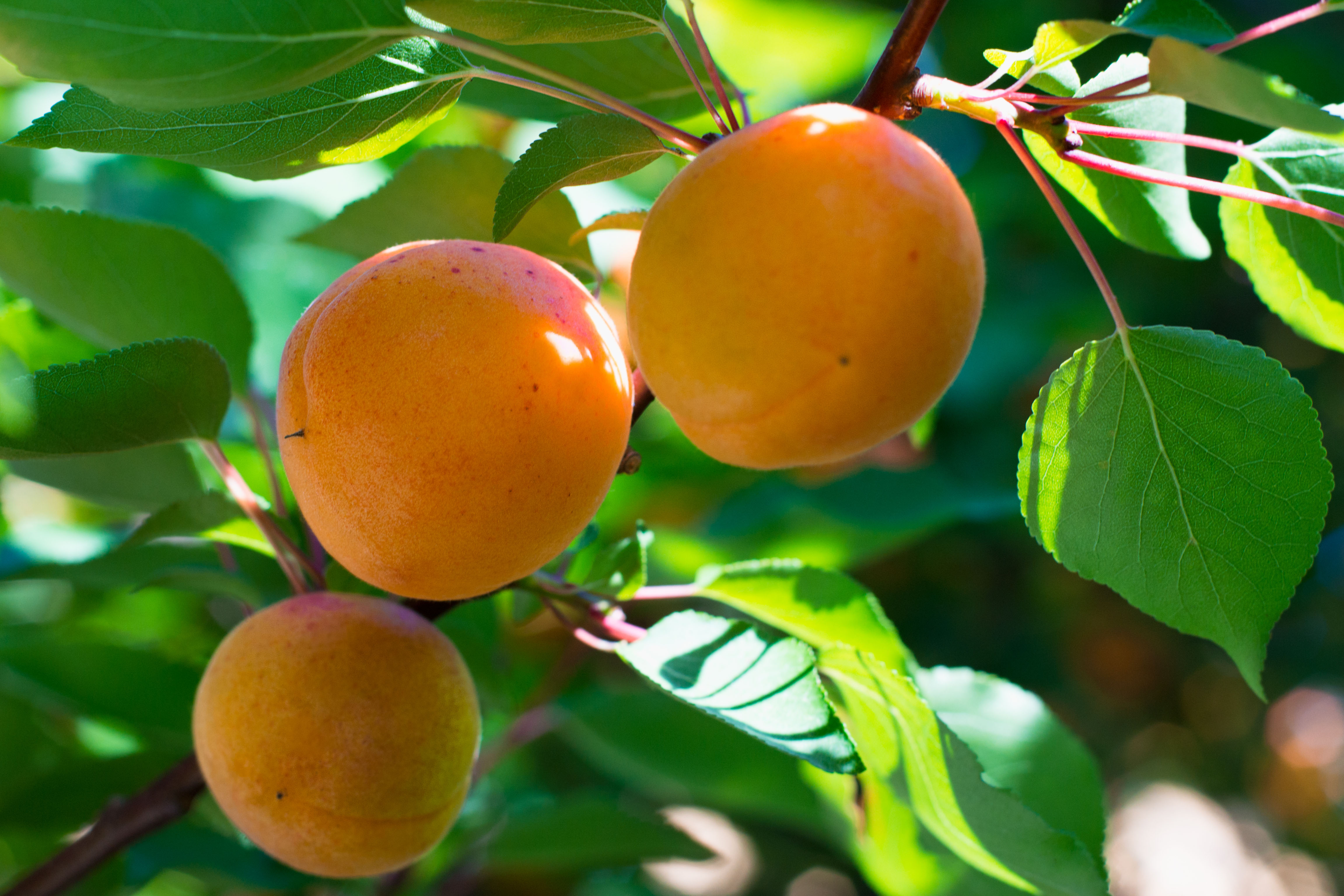
Credit: Alamy
Exquisite houses, the beauty of Nature, and how to get the most from your life, straight to your inbox.
How to grow your own apricots and enjoy 'deep, honeyed richness' far beyond what you'll find in the shops
Mark Diacono hasn't eaten a fresh apricot from a supermarket in years — here are his tips on how to grow
